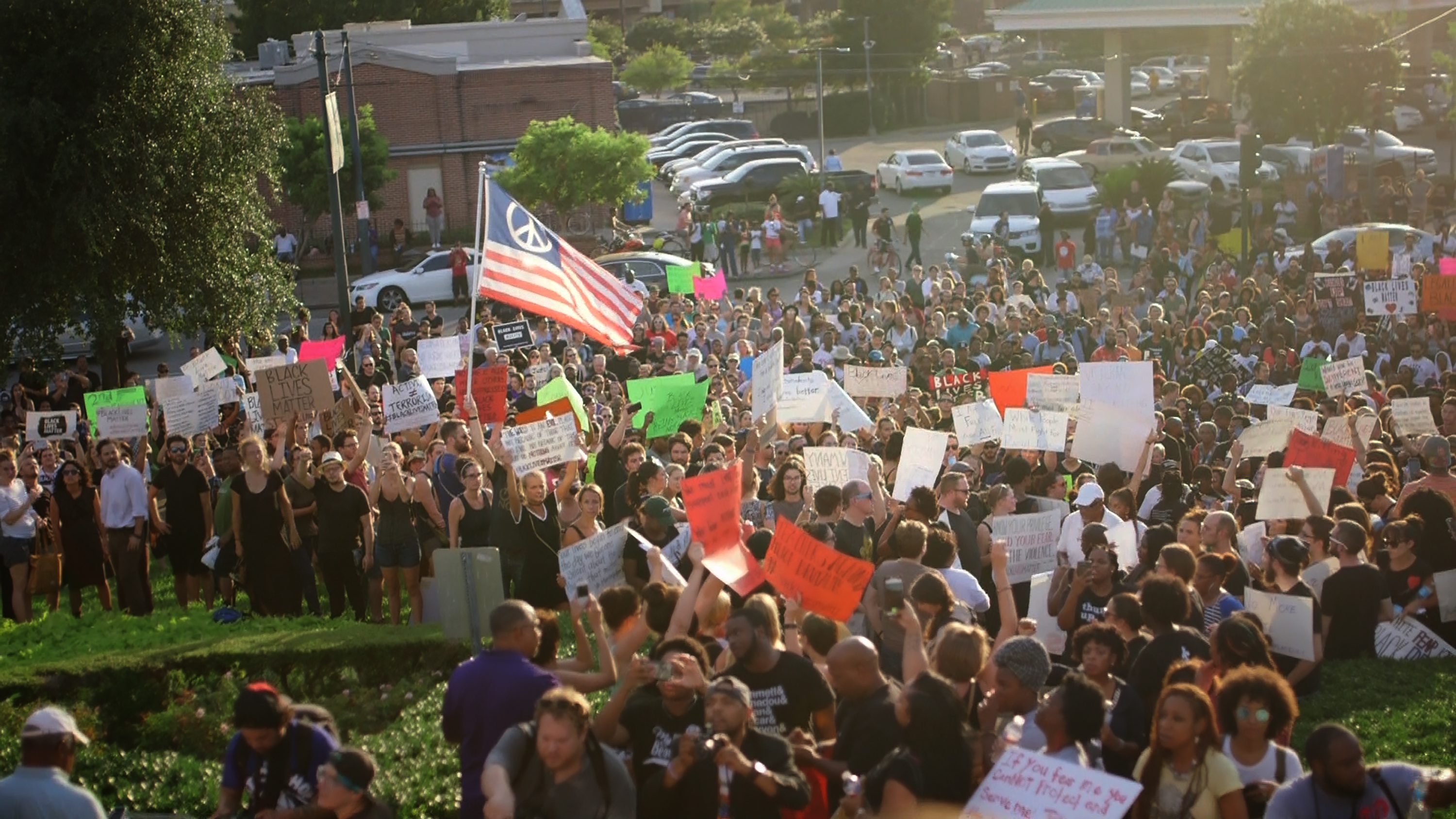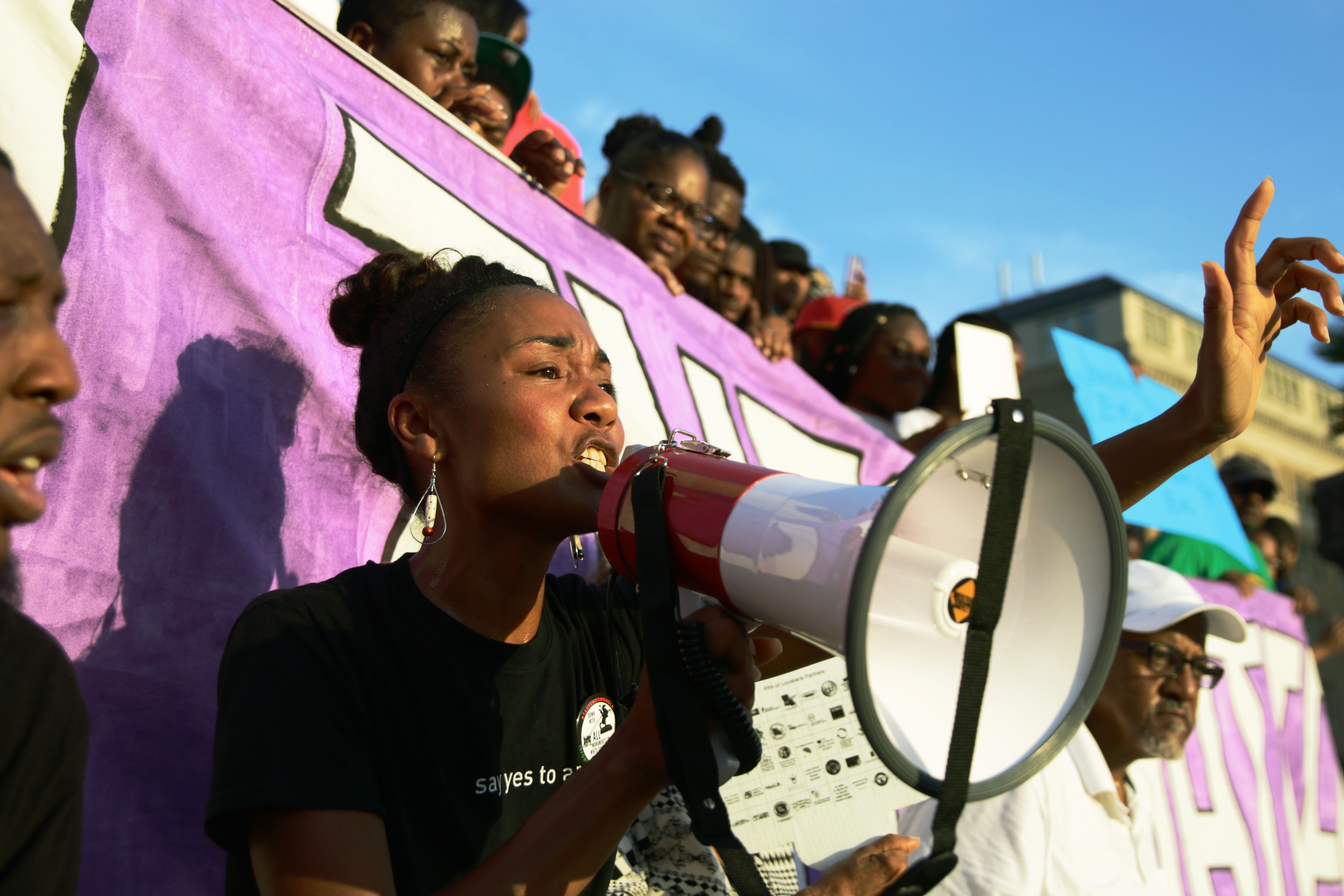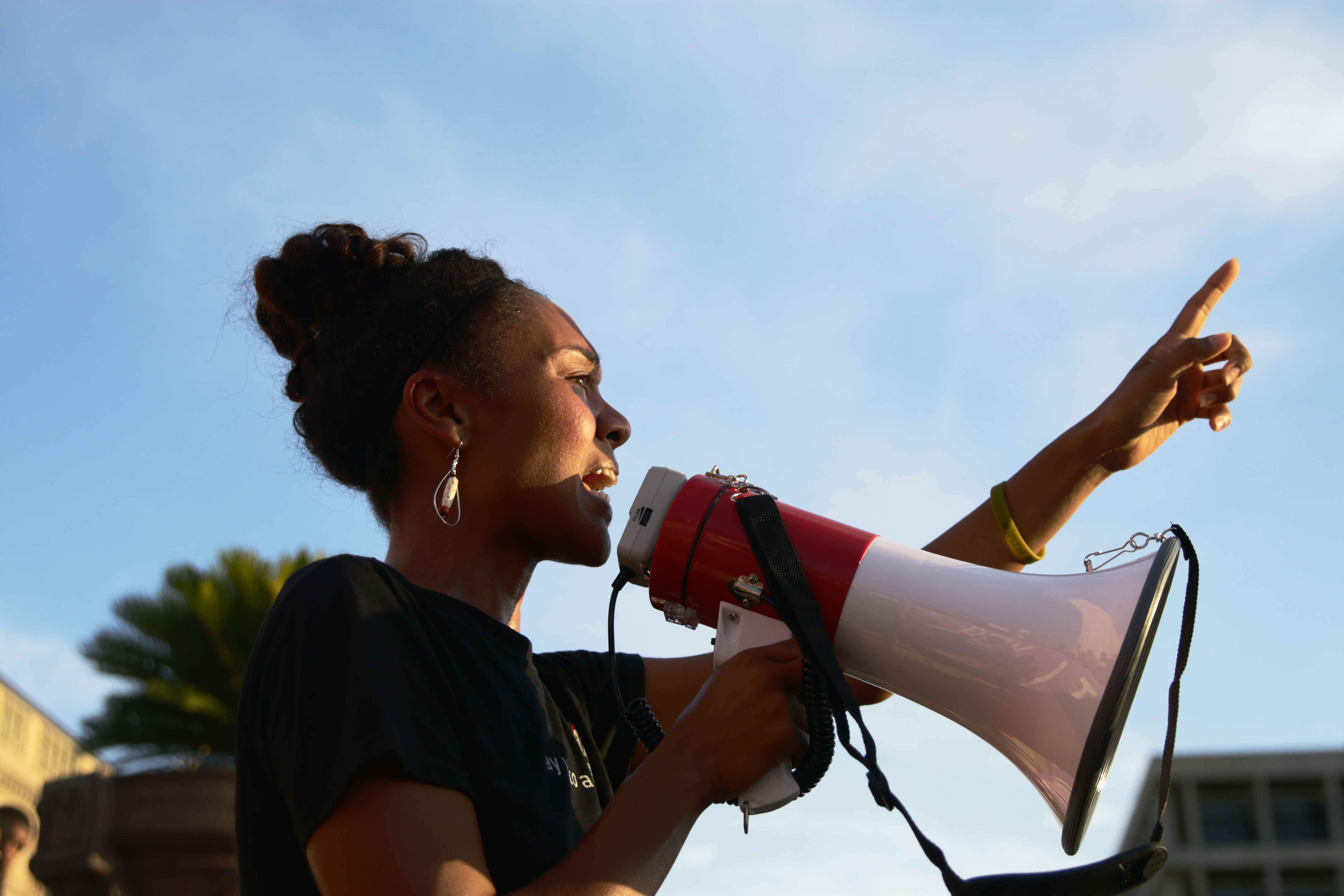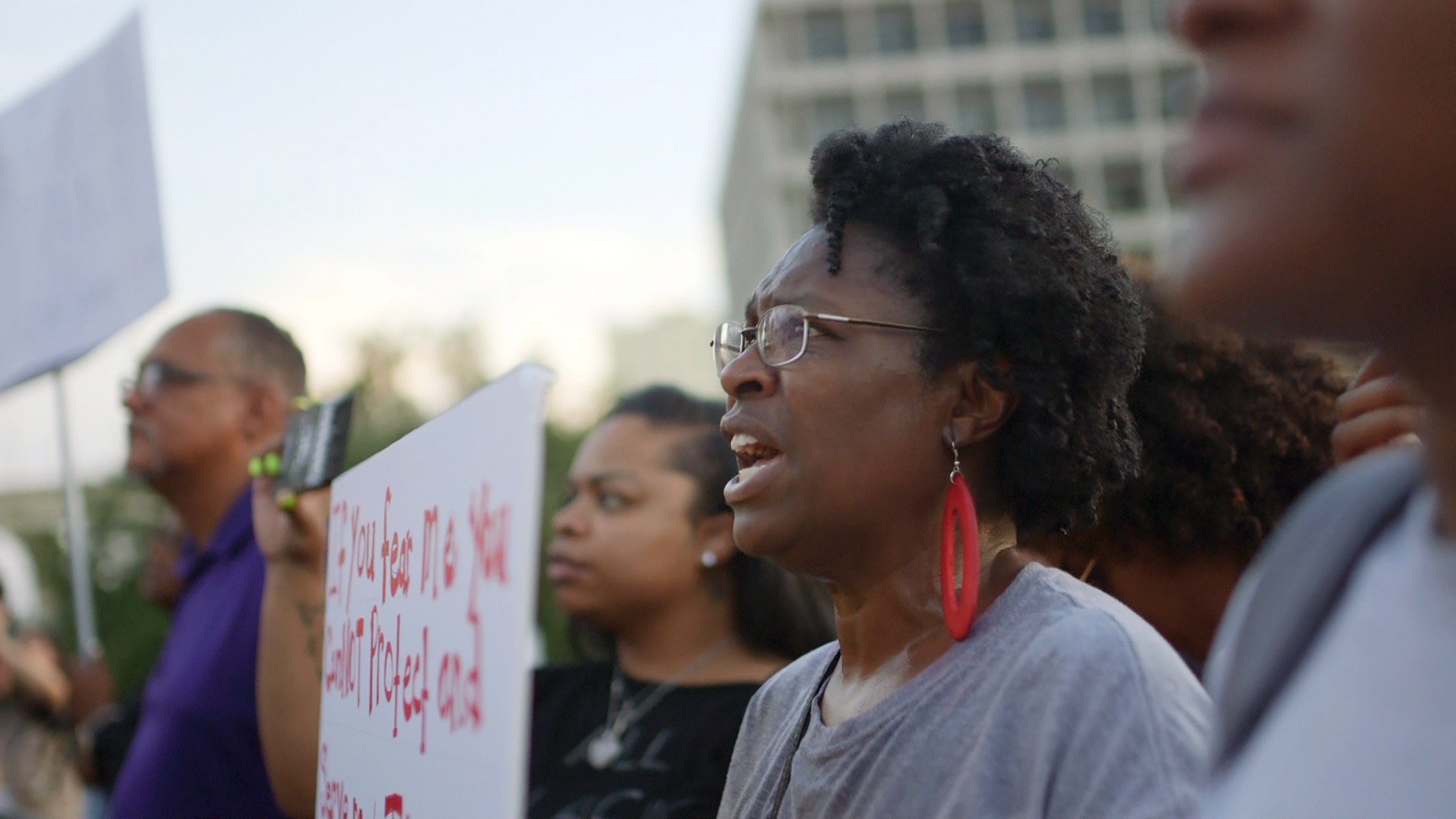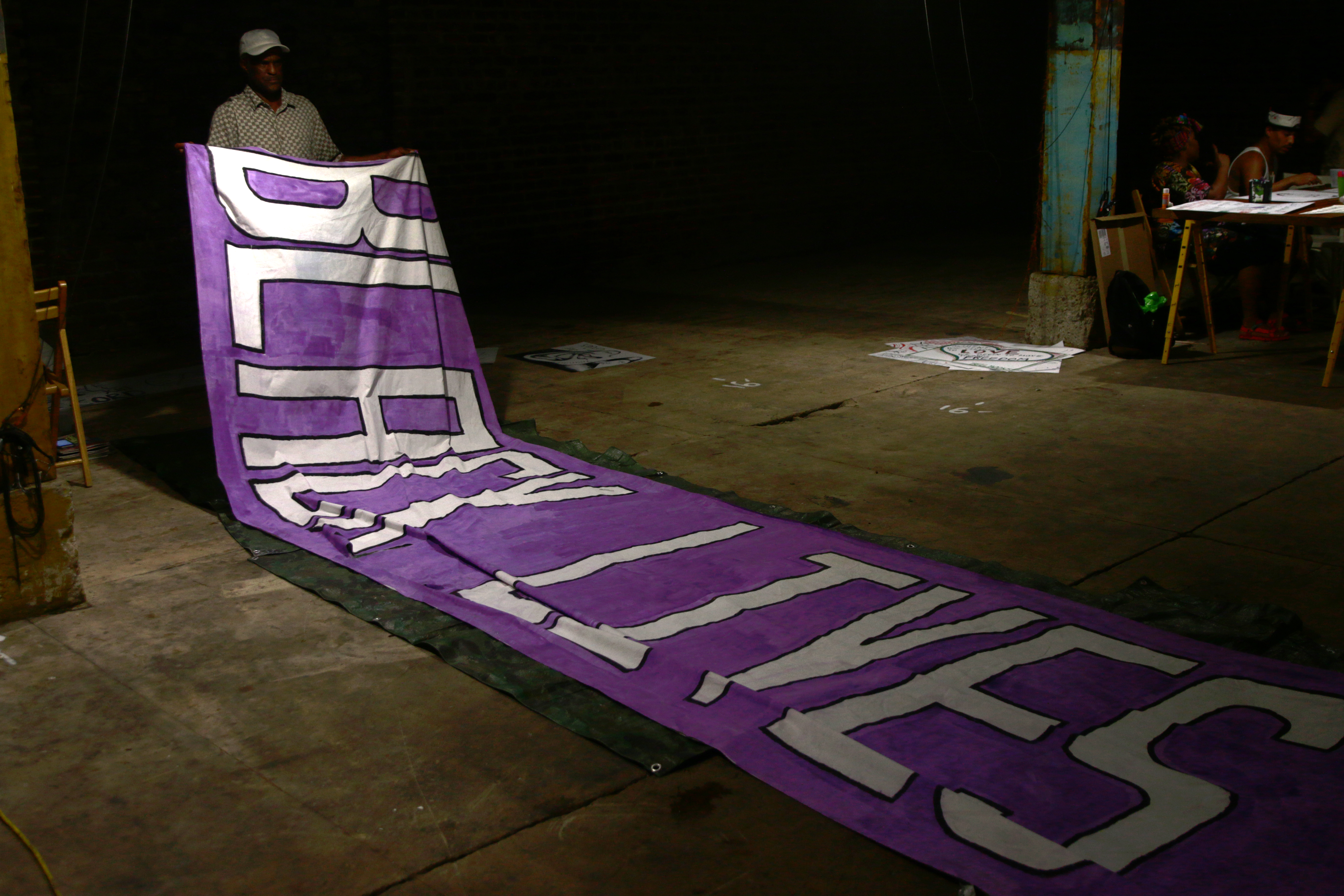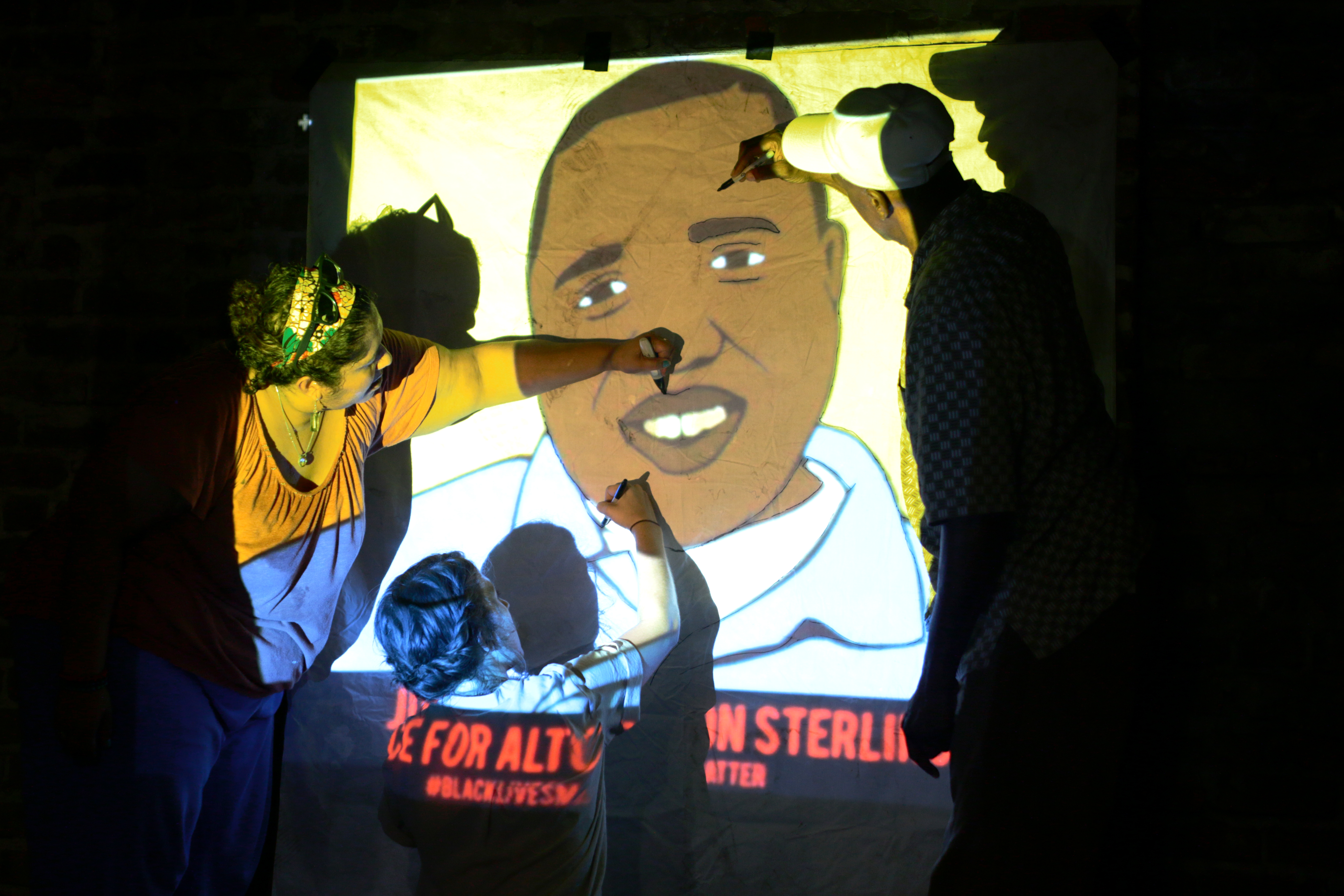NEW ORLEANS — Carrying a bright purple “Black Lives Matter” banner, marchers — a mix of youth and adults — streamed down St. Charles Avenue in the stifling late afternoon heat Friday before converging with a larger crowd gathered at Lee Circle. Using the base of the statue of Confederate Gen. Robert E. Lee as a stage, the protesters called for solidarity with communities across the nation and an end to the police killings.
"As we stand here by this racist Lee statue they will tell us, ‘Don’t be concerned by monuments,’" said activist Angela Kinlaw.
 “But we know that symbols are designed to bond people culturally around values, beliefs and political ideals,” she said.
“But we know that symbols are designed to bond people culturally around values, beliefs and political ideals,” she said.
She pointed to the existence of the Lee statue, and other similar tributes, as symbols of the acceptance of the racist killing of black and brown people by the police.
"The silence is a condoning of state-sanctioned violence," Kinlaw said.
Led by the family of Eric Harris, who was killed last March by Jefferson Parish Sheriff’s Officers, the march and rally was organized to show unity with the families of Alton Sterling, Philandro Castile and others who have been killed by police. Their stories have been splashed on the covers of newspapers, featured on social media feeds and broadcast on news channels across the country.
On Tuesday, video showing Baton Rouge police officers killing Sterling was released on social media by a community activist. On Wednesday in Minnesota, Castile’s girlfriend livestreamed the aftermath of a police shooting that killed Castile.
The rally in New Orleans was in sharp contrast to events in Baton Rouge, Atlanta and across the nation, where protests have led to dozens of arrests. New Orleans Police Department officers kept a watchful eye on protesters, but remained about a block away from the group. Officers peering at the scene with binoculars could be seen stationed on top of a nearby hotel. NOPD refused to comment on the rally, but no arrests or altercations were observed during the peaceful event.
“At first I was a little fearful to come out with my daughter, but I just felt like it was time,” said New Orleans resident Keesha Broussard, who was there with her 13-year-old daughter, Kennedy.
“It was time for her to come out and see how you can incite some change and how we can have some positive solidarity among all this negativity,” she said, adding that she was energized by the diversity of the crowd.
In the wake of the brutal killing of five police officers in Dallas, law enforcement officials have been closely monitoring protests across the country. Also in contrast to heated interactions between police and protesters in Baton Rouge, Atlanta, New York and other cities, no uniformed officers were observed interacting with the New Orleans crowd.
The size of the group impressed experienced activists.
"I was inspired by the turnout — it was by far the largest crowd I've ever seen for any protest or action in New Orleans," said Jayeesha Dutta, who has been organizing for six years in New Orleans and is the co-founder of the Radical Arts and Healing Collective. “I believe art has the power to heal and to change hearts,” she added.
Domonic Stewart-Guido, 11, who attended the rally with his mother, also hopes for a change.
“I’m here to protest the police killing those people in Minnesota and Baton Rouge,” he said. “We hope they’ll change their minds and arrest the cops,” he said. “Hopefully the government will take notice that we all don’t like this — we hate this.”
